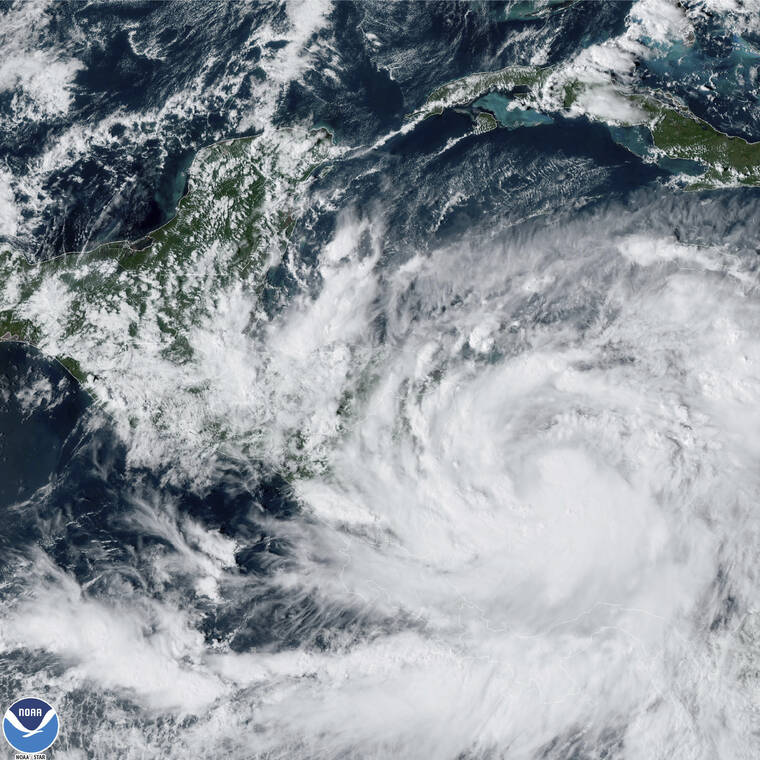Hurricane Julia near Nicaragua after lashing Colombia island
MEXICO CITY — Hurricane Julia closed in on Nicaragua’s central Caribbean coast late Saturday after lashing Colombia’s San Andres island in a near pass soon after strengthening from a tropical storm in the afternoon.
After gaining power throughout the day, Julia’s maximum sustained winds had stabilized around 75 mph (120 kph) late Saturday, just over the threshold for a Category 1 hurricane, the U.S. National Hurricane Center said.
The storm was centered about 80 miles (130 kilometers) east-northeast of Bluefields, Nicaragua, and was moving west at 16 mph (26 kph), with landfall on the Nicaraguan coast forecast for overnight.
Colombian President Gustavo Petro had declared a “maximum alert” on San Andres as well as Providencia islands to the north and asked hotels to prepare space to shelter the vulnerable population. Officials on San Andres imposed a curfew for residents at 6 a.m. Saturday to limit people in the streets. Air operations to the islands were suspended.
There were no early reports on what effects the storm had in San Andres.
In Nicaragua, authorities issued an alert for all types of vessels to seek safe harbor as the hurricane followed a general path toward the area of Bluefields and Laguna de Perlas.
Guillermo González, director of Nicaragua’s Disaster Response System, told official media that people at high risk had been evacuated from coastal areas by noon Saturday. The army said it delivered humanitarian supplies to Bluefields and Laguna de Perlas for distribution to 118 temporary shelters.
In Bluefields, however, life appeared little changed Saturday night, and people expressed reluctance to leave their homes.
Forecasters said a greater threat than Julia’s winds were rains of 5 to 10 inches (13 to 25 centimeters) — up to 15 inches (38 centimeters) in isolated areas — that the storm was expected to dump across Central America.
“This rainfall may cause life-threatening flash floods and mudslides through this weekend,” the U.S. National Hurricane Center said.
The storm’s remnants were forecast to sweep across Nicaragua and then skirt by the Pacific coasts of El Salvador and Guatemala, a region already saturated by weeks of heavy rains.
In Guatemala, officials said Julia could drench 10 departments in the east, center and west of the country — an area that has been most affected by this rainy season and where the poorest people are concentrated.
From May to September, storms have caused 49 confirmed deaths and six people are missing. Roads and hundreds of homes have been damaged, Guatemalan officials say.
In El Salvador, where 19 people have died this rainy season, the worst rainfall is expected Monday and Tuesday, said Fernando López, the minister of environmenta and natural resources. Officials said they had opened 61 shelters with the capacity to house more than 3,000 people.

